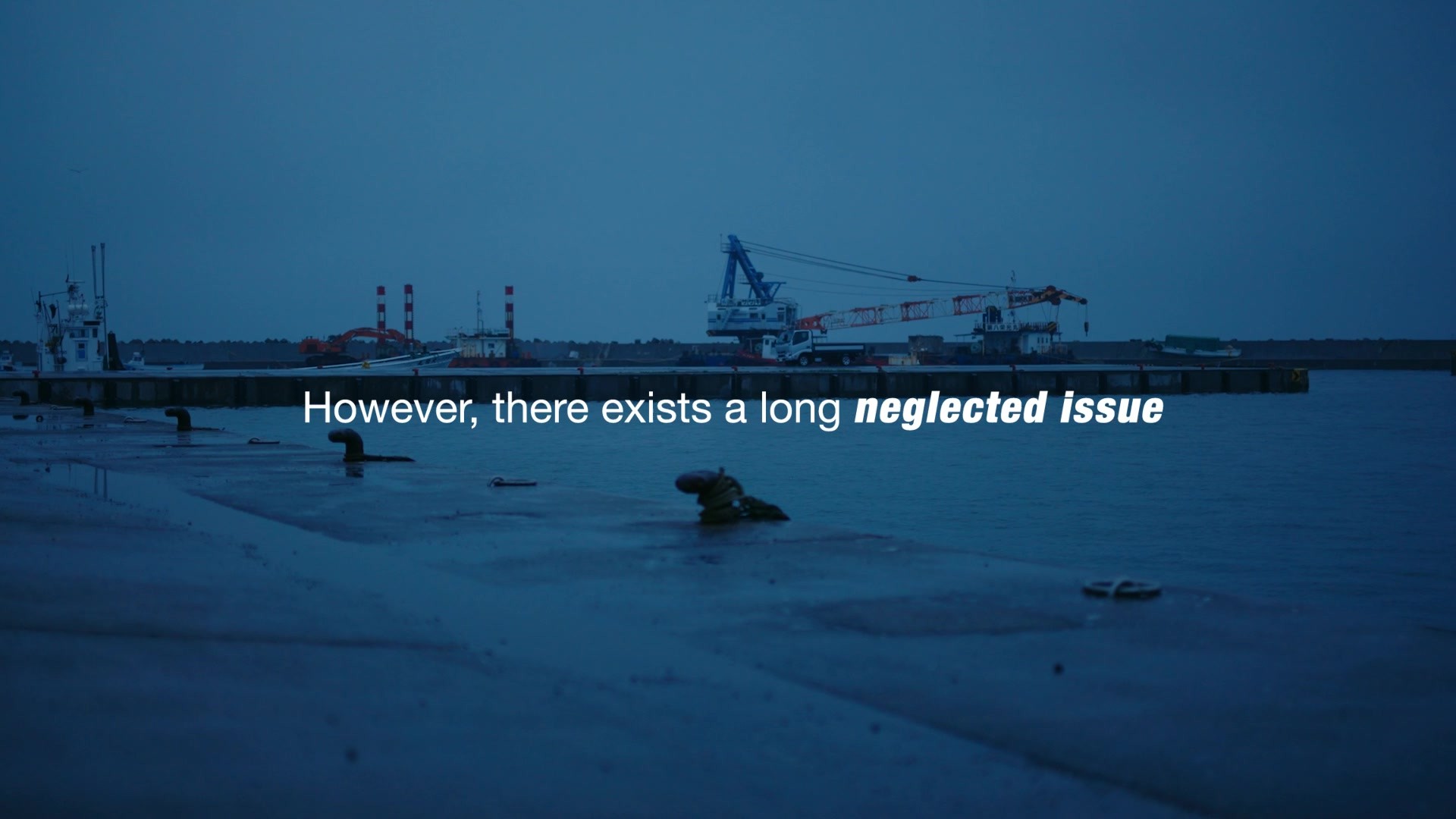Cannes Lions
SHELLMET
TBWA\HAKUHODO, Tokyo / KOUSHI CHEMICAL INDUSTRY CO., LTD. / 2024

Overview
Entries
Credits
OVERVIEW
Background
Although Scallops are the most commonly eaten shellfish in Japan, they are also the most discarded shellfish. Hokkaido's Sarufutsu Village is home to the largest scallop catch in the country. In 2021, exporters discarded approximately 40,000 tons of shells on the shoreline.
Experts point out not only the challenge of securing a place to deposit shells, but also an environmental preservation issue as piles of shells omit a foul odor, and cause groundwater contamination from heavy metals contained in the remains.
We aimed to transform discarded shells into a new resource to empower the community.
NOTE: This project involves a collaboration between the manufacturing company Koushi Chemical Industry, Sarufutsu Village, which is grappling with the issue of discarded shells, and an agency. The team, led by the agency, is comprehensively handling everything from idea development and design to PR.
Idea
Initially, we studied the main component of scallop shells, calcium carbonate, known for enhancing mechanical strength in materials like cement. Observing the natural durability of shells, we realized their potential for protection, leading to the creation of SHELLMET, the world’s first helmet made from scallop shells.
It is made of almost 100% recycled material, which reduces CO2 emissions by up to 36% compared to plastic.
Shell derived materials used in SHELLMET are gaining attention as alternatives to plastic, leading to new business developments. These materials can be sourced from any shellfish, not limited to scallops but including mussels and oysters, allowing for global expansion into fishing communities. In major shell-producing regions like China and the USA, over 15.6 million tons of shells are harvested annually, highlighting the potential for a global impact in converting 'Tons of Waste to Tons of Resources”.
Strategy
The key message was, "Protect heads and the planet."
We aimed not only to recycle discarded shells, but also to add value by allowing consumers to support this project while protecting the environment.
Many products exist that create new waste in the name of recycling. Contrastingly, we aimed for a sustainable society through a system where SHELLMETs are continously crushed and reused as building materials or new SHELLMET materials.
We interviewed villagers to ascertain the need for the product among fishermen and villagers, and utilized these interviews in development. Furthermore, with bicycle helmets becoming mandatory in April 2023, we positioned the product as "Sarufutsu’s specialty helmet" to coincide with the growing demand for helmets, sending a message from Sarufutsu to consumers.
More SHELLMETs means less discarded shells that cause soil contamination. This makes a tangible contribution to the planet and nudges the involvement of society, both individuals and companies.
Execution
Of particular note is the design. The application of natural structures to technological development is called "Biomimicry". SHELLMET is based on this concept and incorporates a ribbed structure unique to shells. As a result, it succeeded in yielding 133% strength compared to a regular helmet.
The SHELLMET offers five sea-inspired colors. Unlike pricier sustainable options, it's priced at 32USD, the same as other Japanese helmets, and available online for anyone.
We aim to create a sustainable society by recycling SHELLMETs, crushing and reusing them for new materials once their intended use is complete.
Outcome
After the product launch, the news was covered in 34 countries and reached 5.6 billion people. SHELLMET has spread beyond the community of Sarufutsu Village and has become popular throughout Japan. In the first two months, SHELLMET recorded 1,397% ($37,000+) of its sales target. More than 1,863 tons of discarded shells are expected to be recycled.
Besides, the innovation was highly evaluated, and adopted as the official disaster prevention helmet for the Osaka Expo2025.
Plus, this material, seen as an alternative to plastic, has attracted interest from 98 global brands, leading to ongoing projects. It is being used not only in buildings but also in various applications such as bag buttons for the Camper and in-flight items by ANA, a major Japanese airline. Total sales for SHELLMET and materials currently stand at $78.5K. We've converted waste shells into resources, solving Sarufutsu Village's environmental issues and creating a new revenue stream.

